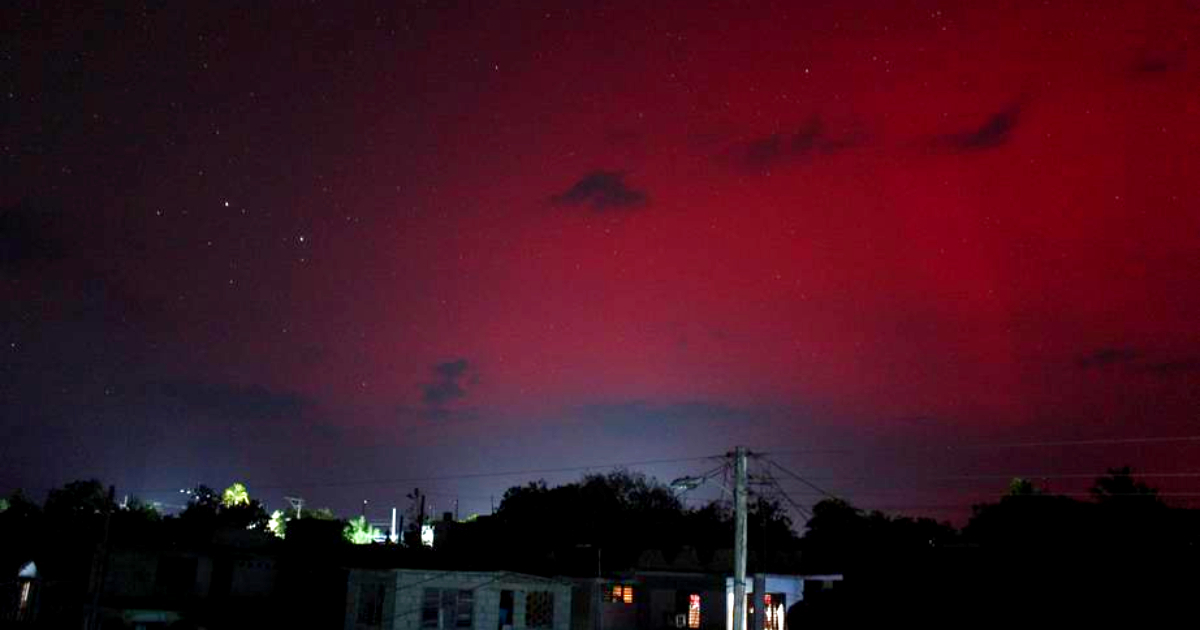
The solar storm recorded in the last hours, classified as the most intense recorded since 2003, left spectacular images of the northern lights even in regions as far from the north pole as Cuba, very close to the Tropic of Cancer.
Defying the usual expectations of exclusive viewing at high latitudes, the phenomenon dyed the island's night sky with pink and blue colors, leaving a display of iridescent colors that fascinated observers.
"Incredible! Northern lights observed in Gibara, Cuba! Due to the arrival of an extreme solar storm. A unique show! “I never thought I could see them!” reported a user of Facebook.
In the Matanzas municipality of Jagüey Grande, sightings of the phenomenon in the night sky were also reported.
“Jagüey Grande, Matanzas, Cuba. Photo taken in night mode, since with the naked eye you cannot see the northern lights,” indicated a user of the social network X.
For his part, the member of the Cuban Meteorological Society, Henry Delgado Manzor, shared in Facebook an explanation for this striking and disturbing phenomenon.
“The phenomenon, typically associated with polar regions, has left many amazed, highlighting the beauty and rarity of the phenomenon in a location as unexpected as Cuba,” said the meteorologist, sharing images captured by Norge A. Gallardo Quesada en Blocked.
The specialist offered interesting data about the sighting of these phenomena in Cuba. Although they occur very rarely, the northern lights have also been seen in the past.
“One of the most notable was documented by the prestigious Cuban meteorologist Andrés Poey Aguirre, in the summer of 1859. Another sighting took place on September 4, 1872, and one of the last known reports was from March 1989, during a great solar storm that affected the Earth,” explained Delgado Manzor.
The scientist explained that, like its southern counterpart, “the northern lights are the result of the interaction between gases in the Earth's atmosphere and the solar wind: a stream of electrically charged particles coming from the sun.”
“When these particles reach Earth, they interact with the planet's magnetic field, generating streams of charged particles. "Some ions are trapped in the ionosphere, where they collide with oxygen and nitrogen atoms, exciting them and releasing energy in the form of light, thus creating the impressive light show that has left many amazed tonight."
The natural phenomenon captured global attention due to its magnitude and its potential impact on terrestrial and space technology.
What do you think?
COMMENTFiled in: